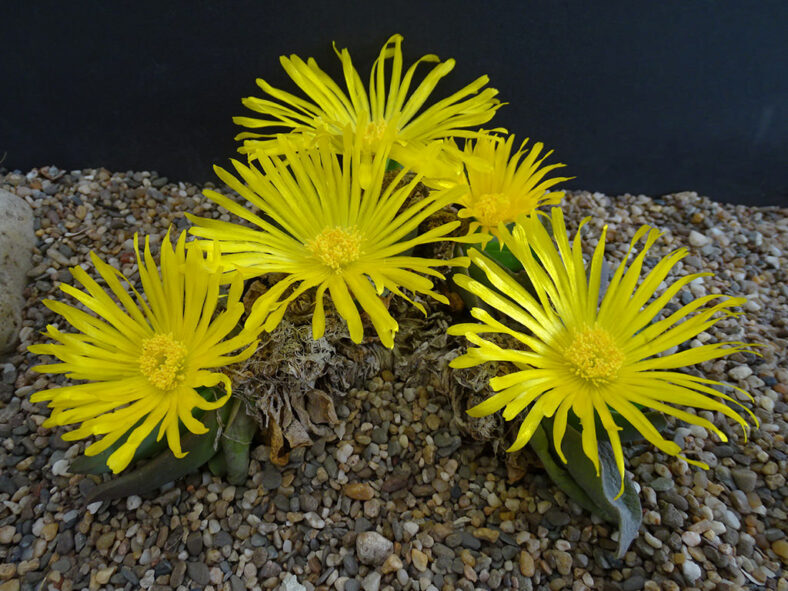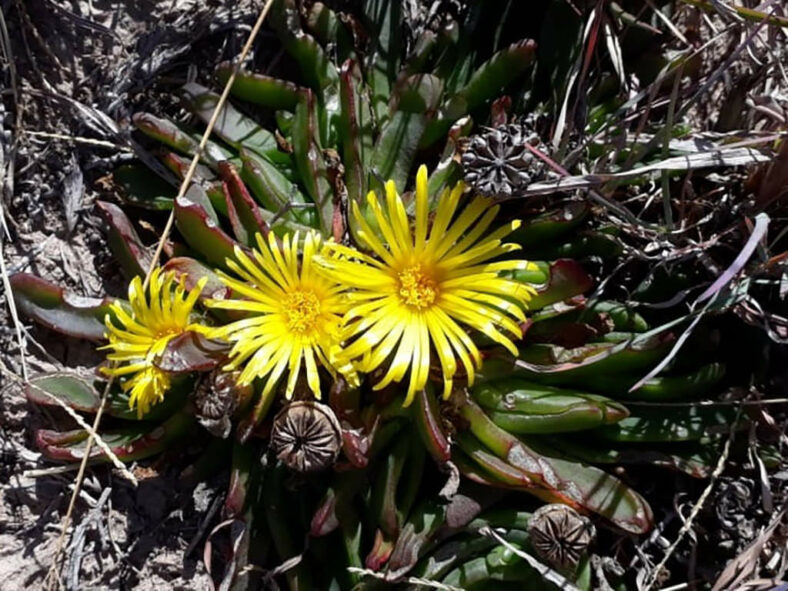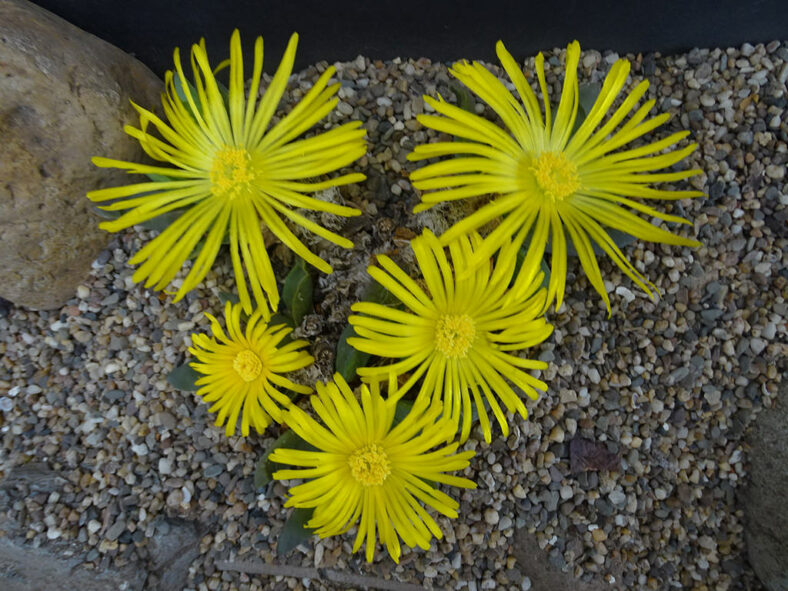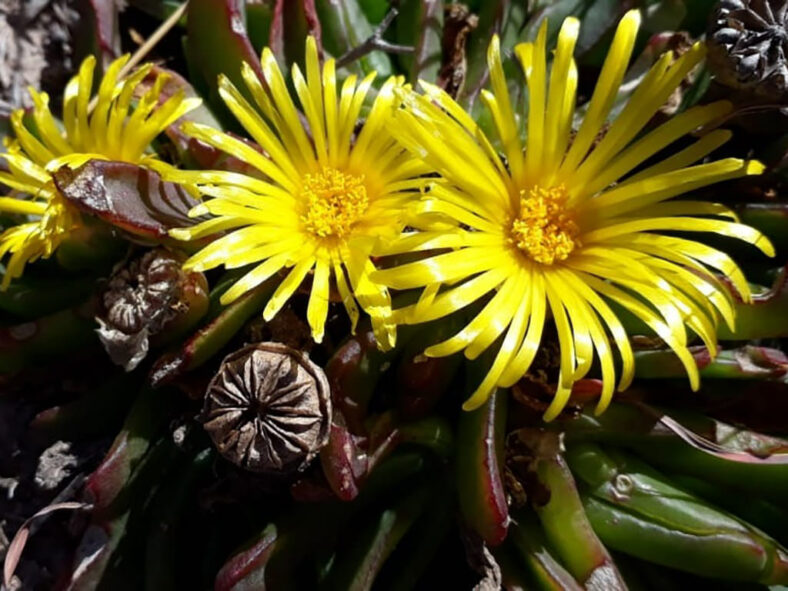Glottiphyllum grandiflorum is a lovely plant that can thrive in small pots, gardens, and rockeries, adding a touch of beauty to any space.
Scientific Name
Glottiphyllum grandiflorum (Haw.) N.E.Br.
Common Name(s)
Grand Tonguefig
Synonym(s)
Mesembryanthemum grandiflorum, Mesembryanthemum linguaeforme var. grandiflorum
Scientific Classification
Family: Aizoaceae
Subfamily: Ruschioideae
Tribe: Ruschieae
Genus: Glottiphyllum
Etymology
The specific epithet "grandiflorum" (pronounced gran-dih-FLOR-um) means "having large flowers" and refers to the size of the flowers of this species.
Origin
Glottiphyllum grandiflorum is native to South Africa. It occurs in rocky areas on karoo shales or siltstones in the Eastern Cape province.
Description
Glottiphyllum grandiflorum is a small succulent plant with strap-shaped leaves with rounded tips. It can grow up to 4 inches (10 cm) tall, forming a compact dwarf shrub. The leaves are decumbent, highly succulent, more than 4 to a branch, and densely arranged in two rows on opposite sides of the branches.
During the winter, Glottiphyllum grandiflorum produces solitary, yellow flowers with narrow petals and almost no stalk. The fruits are pale brown, usually 9-locular capsules with thick, spongy valves.

How to Grow and Care for Glottiphyllum grandiflorum
Light: Glottiphyllum grandiflorum requires bright light but not too much direct sunlight. So, a windowsill that receives 4 to 5 hours of direct sunlight in the morning and partial shade in the afternoon will be a perfect spot for indoor growing.
Soil: The plant thrives in porous soil, allowing the water to drain away quickly. Therefore, use commercial soil for succulents or make your own well-draining mix.
Temperature: High temperatures are not a problem as long as there is plenty of fresh air, but this plant is not cold-hardy. It grows best in USDA Plant Hardiness Zones 9b to 11b, with average minimum winter temperatures ranging from 25°F to 50°F (- 3.9°C to 10°C).
Watering: To keep Glottiphyllum grandiflorum healthy, it is most important to know when, how much, and how often to water. During the dormant period, usually in summer, the plant requires little or no water. In the fall, once it grows again, water thoroughly but allow the soil to dry between waterings.
Fertilizing: As long as you repot this plant every two years, it does not need fertilizer.
Repotting: Even if it can stay happy in the same pot for years, once in a while, you can repot your plant to give it more space anytime during the growing season. However, the best time is at the beginning of the growing season.
Propagation: Although it is usually started from seeds, Glottiphyllum grandiflorum can also be easily propagated from stem cuttings during the growing season.
Learn more at How to Grow and Care for Mesembs.
Toxicity of Glottiphyllum grandiflorum
Glottiphyllum grandiflorum is considered non-toxic, so it is safe to have around kids and pets.
Links
- Back to genus Glottiphyllum
- Succupedia: Browse succulents by Scientific Name, Common Name, Genus, Family, USDA Hardiness Zone, Origin, or cacti by Genus
Photo Gallery
Click on a photo to see a larger version.


